Khorog, Tajikistan to Osh, Kyrgystan
September 27th and 28th, 2007
By Dan Murdoch
RETRACING the steps we had taken the day before by Trabbi, I was immediately struck by how different it is riding in a normal car.
For the first time in two and a half months people weren’t staring at us.
Hey, it’s us.
But nothing.
No waving, no screaming, no kids running alongside our cars, no old men tapping on the chassis and raising querying brows. The police don’t even stop us now. We’re just like any other backpackers- except there really aren’t any other backpackers around here.
Our star has truly fallen.
Hey, we used to be famous.
Whatever, get to the back of the line.
It’s strange.
On the other hand it’s nice to be a casual tourist for a week. I can revel in the anonymity. I don’t have to get up at seven. There’s no worrying about the cars, the group, the plan, the money, the breakdowns, the… … …
We are in two teams- Team USA and Team Europe. A strange circle, when I first met Lovey and TP, back in 2001, we designated them Team USA.
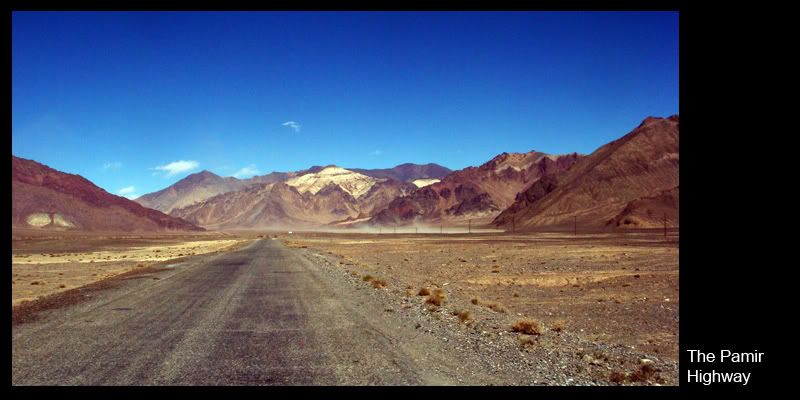
The Pamir Highway between Khorog and Morghab reminded me of the Turkmen desert. But it is freezing cold and two miles high.
Millions of years ago it would have been a desert at a reasonable level- another chunk of rolling Central Asian plains. But the steady shove of the Indian subcontinent has raised it an inch a year until now this bleak plain sits 3,000m high, incongruous in the mountains.
It has the same bleached boulders and sun starched sands as any desert- all the colours washed out. It is bone chillingly cold in the shade and at night, when a wind picks up it grates the flesh and painfully rattles the nerves.
But still, the sun is powerful enough to burn.
The land has its own bleak beauty. Other than the cold the only sign that we were in the mountains were the distant snowy peaks and glaciers- 6,000m tall but resting easy on the eye line.
We stopped at thermal springs and dipped in boiling hot, greenish water that smelled of eggs. The flow had been funnelled into a small hotel complex with a café and a tv. I imagine the other trekkers would be delighted to find this little oasis in the desert, and maybe spend some time there. But we had just half an hour as our share taxi was keen to plough on. There were seven of us in the five-seater, with two crammed into the boot. Luckily we had sent our bags ahead.
Our car crossed crumbling bridges with old tank parts for decoration, twisted steel reinforcement, protruding from the cracked concrete.
The drive wasn’t difficult, we’d been told this leg was pretty flat, and it was true, there was little that I imagined would trouble the Trabbis. Though I expect those words to come back to haunt me.
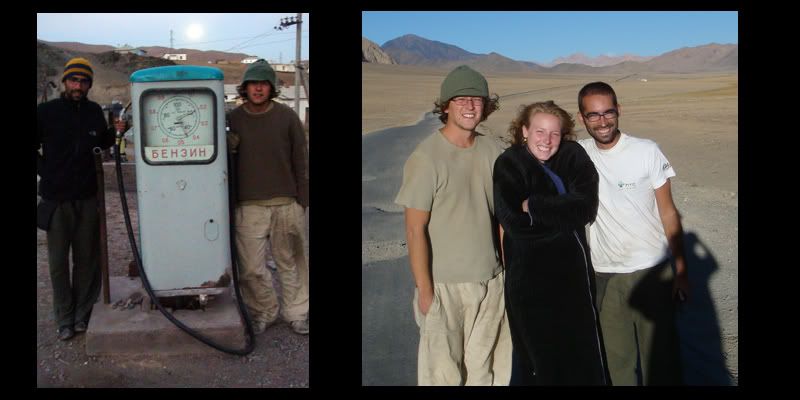
We stayed at the Murghab Hotel. There was only enough electricity to power two light bulbs at night. It’s freezing. Washing my hands felt like thrusting them into a furnace. No wonder Marco Polo complained when he crossed the mountains.
We sat on mats on the floor with an old man and his old son. The father was white haired and Chinese looking, his eyes seemed almost closed, and he rocked back and forth when he laughed like an old bear. His son was deferential, filling up his father’s cup at every opportunity, and pausing to allow him to speak. The old man dipped hard Chinese bread into his tea. We shared two cups between us- one person would drain their ration then hand it back to the younger old man, who would pour the dregs into a dish, then refill the cup and pass it to the next person.
It felt primitive and natural to share the simplest of commodities, hot water and a few tealeaves. Then they offered peaches and a strange fruit that looked and tasted like a cross between an apple and a pear.
There is little choice but to bed early in the mountains and on my way to the freezing outdoor squat I heard the Hound Chorus kicking up as the town’s muts began their nightly battle for territory, invading in packs and defending rival incursions.
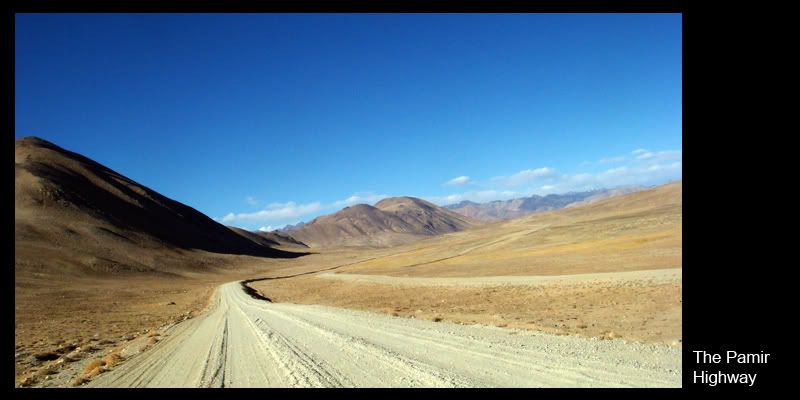
The town is a jagged mix of one-storey buildings, connected by dirt tracks with one wide paved road running through it. Deceptively large, there are 400 pupils at the school. The following morning I walked in with one who had the same thoughts you’d expect of any 15-year-old. He hated learning the periodic table for chemistry, and didn’t know why he was studying Arabic, English, Russian, Chinese and Tajik.
We hired a 4x4 to take us to Osh in Kyrgyzstan, a twelve-hour drive. The scenery was far more spectacular then the previous day, a geologist’s wet dream.
Out of endless desert springs a huge icy lake of deep aquamarine formed by a meteor in another time. Peaty bogs turn to hard brown tundra and frozen streams irrigate the bleak permafrost. Thick yellow grass meets jet black sands and hardy shrubs cling to orange earth.
A haze of sand floated like a heat haze on the horizon. Rising from the opaque, the hills escalate in tiered in colours. Ochre sands and a kaleidoscope of stones flanked the arrow straight path.
Man has made little impression on this landscape. Just three signs of human existence: the long road, lined by electricity poles and flanked by the fiercely barbed Chinese border.
We hugged that border for hours, with it menacing lines of razors. I was surprised to find a lone gate in the fence, near to nothing, with no path leading up to it, but invitingly open.
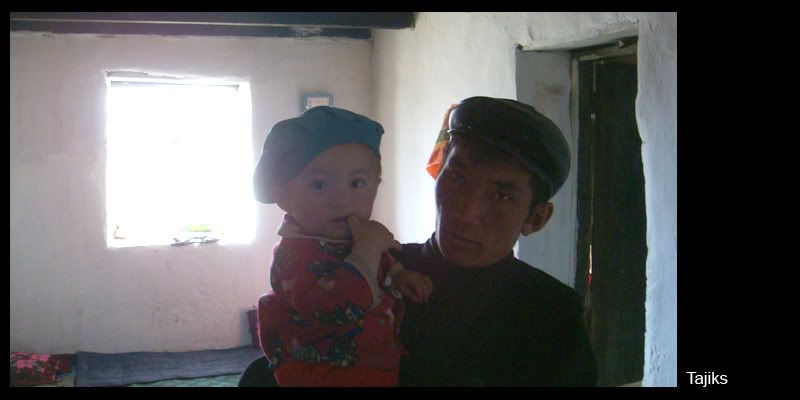
We stopped at a mountain village for tea and were served by a strikingly good looking family- high cheekboned with broad honest faces, the epitome of mountain health. The husband was Chinese looking with his flat cap and practical clothes.
We ate deer with hard bread and a sour yoghurt made of yaks milk. To much amusement Zsofi dropped her purse into the toilet pit, and the husband had to fish it out with a pole.
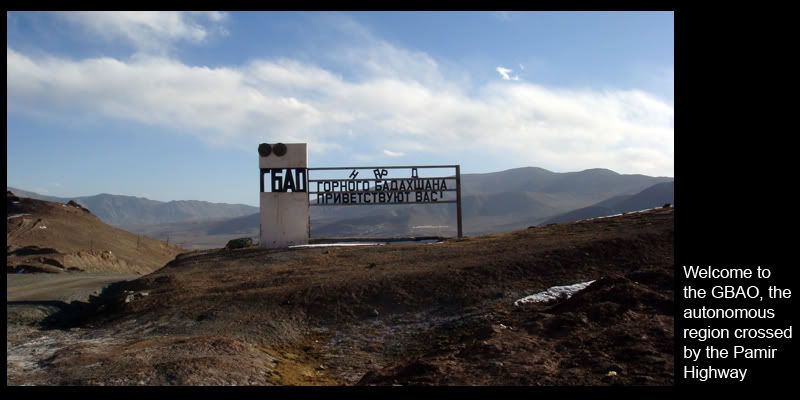
With our driver acting as guide, the spectacularly located border was no problem. But it is surely one of the world’s longest crossings- more than 20km of no man’s land between Tajikistan and Kyrgyzstan.
The landscape here is instantly different. Shimmering emerald cliffs moated by chocolate clay. Mounded of saffron hills bearded with cumin.
We followed miles of rounded pebbles marking a former riverbed, sparkling out like broken glass.
The road changed too, deteriorating suddenly into an unpaved rockface, the surface becoming a treacherous mix of slick clay and jagged stone.
I can imagine the little Trabbis being stuck here- where few but eagles roam, stuck in the strange space between countries. Their only respite is that it is mostly downhill from there.
At Kyrgyz customs Zsofi noticed the guards were tearing paged from the register to use as toilet paper.
The final Kyrgyz border post was closed by the time we reached it, but we paid the guard $10 to let us through. I breathed a sigh of relief to leave Tajikistan behind me, we’d been stuck there too long, and continued to Osh.
Ends
mrdanmurdoch@gmail.com
For more of Dan’s blogs visit danmurdoch.blogspot.com or trabanttrek.org

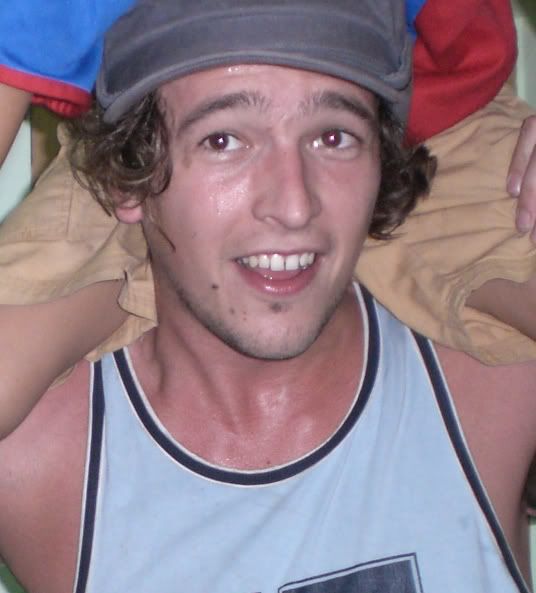
2 comments:
А! Ho appena aggiunto il tuo feed ai miei favoriti. Mi piace molto leggere il tuo post.
wow what a beautiful picture i like it thanks for sharing
Post a Comment